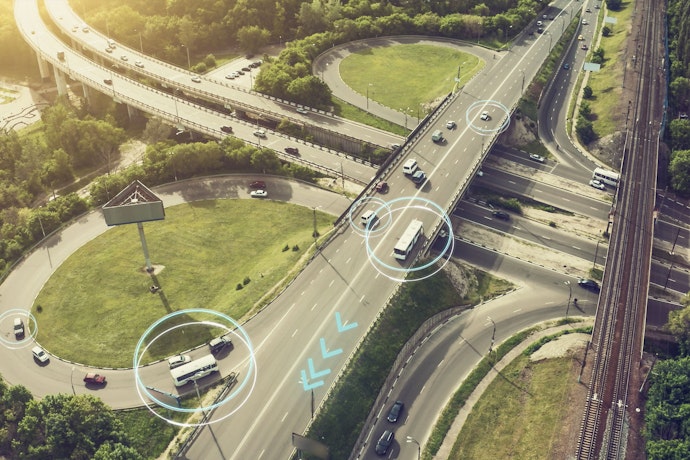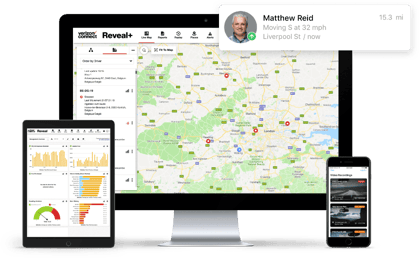9 Secrets to Reducing your Fleet Expenses
As a fleet owner, your day-to-day costs can quickly add up. What you don’t know is there are further hidden, expensive...
Read more
Most of us are familiar with Global Positioning System (GPS) already, at least on a superficial basis. This is not least because GPS tracking has been available on our mobile phones and car navigation devices for quite some time now. But how do GPS trackers actually work and how has the technology become so widespread?
Here, we address these questions and delve into the details of how GPS technology can be implemented into a fleet management system.
The origins of the GPS date back to the 1960s, with the creation of a navigation system called OMEGA. By the late 1970s, the U.S. Department of Defence had developed upon this kind of technology and launched GPS. Essentially, this GPS system could locate the position of any person, vehicle or electronic device anywhere on the earth's surface. GPS tracking devices were initially reserved only for U.S. Military use, until the 1980s when it was made accessible to the public.
How does GPS tracking work then? In a nutshell, a GPS tracking system is made up of three different parts: GPS satellites, ground stations and GPS receivers:
A collection of 24 precisely distributed satellites continuously orbit around the earth. Each satellite broadcasts microwave carrier signals, which contain information about the satellites' position and the timings of sent signals.
Ground-based radar stations constantly track the position of the orbiting GPS satellites and provide calculations to align each satellite's atomic clock precisely to the Earth’s time.
A GPS receiver interprets the signals sent from the GPS satellites and uses trilateration to calculate a precise location. Satellite signals from just four satellites can allow for 3D trilateration, providing the latitude, longitude and altitude location of a GPS tracking device. Due to their low power consumption, GPS receivers are small and relatively inexpensive to manufacture. This small size and low cost are reasons for such wide adoption across a variety of consumer electronic devices such as smartphones.
Today, GPS tracking is incorporated into a wide variety of mobile devices such as smart watches, mobile phones, wearables, tablets, computers or vehicle trackers.
In vehicles, GPS devices are commonly used in navigational systems to guide drivers along routes and help them reach their desired destination.
While this is the most widespread use of GPS among drivers, vehicle tracking devices have become common place in commercial transportation, not only for vehicle tracking but for asset tracking as well. Thanks to telematics, they have become an essential tool in fleet management.
So, what is GPS tracking in the context of fleet management and how is it implemented into a commercial fleet?
Well, telematics takes real-time tracking GPS data from vehicle tracking devices, as well as additional vehicle specific data from a car's OBD port and transmits GPS signals back to centralised servers. All of this information is communicated via cellular networks, or in some cases via a network of satellites.
Essentially, GPS fleet tracking solutions combine the accurate location data from vehicles with a collection of performance data from equipment, in order to analyse daily operations and help improve essential areas such as safety, energy efficiency or productivity.
Let's dive a little bit more into how a GPS tracking system can be used in fleet management:
Vehicle tracking software interprets data sent by telematics to update vehicle information, almost in real time, via a mobile or desktop application. This complete view of a workforce can provide fleet managers with a better overview and understanding of their entire fleet.
With the help of telematics, GPS works to help fleet managers to access the exact location and status of their vehicles on a live map, in near real-time. This allows them to monitor how the workday is developing and respond quickly in the event of any unplanned stoppages, such as a breakdown or an accident. Additional features, like geofence technology, can also assist fleet managers in monitoring commercial vehicles during the day and after hours.
GPS vehicle tracking software and telematics provide much more than just simple dots on the map. The right system allows fleet managers to view job progress and analyse their fleets’ daily performance. These systems help to provide valuable information about a fleet, including vehicle conditions, driving style, fuel consumption, idle time and vehicle activity. These key areas are analysed to identify any required improvements.
Automated reports make it easy to identify those areas that are less efficient and therefore require improvement. Tackling less optimised areas can help to improve a fleet’s day-to-day operations, as well as to create a safe work environment. In doing so, a fleet manager can take steps towards increasing overall productivity, reducing fuel consumption and CO2 emissions.
As previously mentioned, GPS tracking and telematics provide fleet managers with a base for improving the safety and efficiency of their fleet. Smart mobility is based on re-thinking the way in which transport and fleet management are operated. By utilising this technology, smart mobility aims to create safe and efficient transportation networks through the connectivity of vehicles.
It’s no surprise that fleet managers across the country have begun to get on board with this smart mobility approach. Many businesses have implemented GPS tracking systems, with positive results already showing in areas such as productivity, fuel consumption and CO2 emissions.
The increase in fleet management solutions doesn’t just focus solely on the vehicles and driving habits though. This forward way of thinking can also prove beneficial to customers too. The GPS system technology helps to deliver customer service with same day deliveries, route updates, total communication, traceability and complete visibility.
Estimations show that GPS tracking systems and other fleet management solutions are here to stay. It’s predicted that 90 million commercial vehicles will be connected to a telematics system by 2025. This will have a profound effect on the telematics market, which will see its value reach around USD 20 billion.
The continued growth of vehicle tracking technologies is hardly surprising. Thanks to the ability to collate data through an all-in-one platform, these systems have already generated positive results that go beyond the simple tracking of vehicles and assets. Developments in safer driving behaviours, improved customer experiences, reduced CO2 emissions and increased efficiency and productivity, have made this technology an essential tool in leading a smarter fleet and a more competitive business.
Is your business ready for this opportunity?
Schedule a demo today and learn how world-class fleet management software from Verizon Connect can help you get more from your fleet.
Tags: All




Find out how our platform gives you the visibility you need to get more done.
As a fleet owner, your day-to-day costs can quickly add up. What you don’t know is there are further hidden, expensive...
Read moreVerizon Connect Reveal tracks the fleet data that can have a big impact on your business. These are things like where...
Read moreAt Verizon Connect, we can only provide the highest possible level of service to fleet managers and business owners by...
Read moreReveal tracks the fleet data that can have a big impact on your business. These are things like where your vehicles are...
Read more